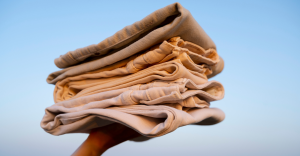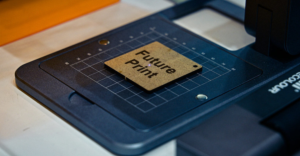Artificial Intelligence (AI) has been gaining more and more space in the fashion industry, with tools that can offer support in several areas, from the creation of pieces and prints to customer experience. AI adds agility, customization, and efficiency, making it a powerful partner for industry professionals.
These technologies help designers, brands and consumers by improving production processes and communication with the public. According to Eliéser Ribeiro, Data Scientist and Head of AI at Provider IT, despite all the noise and “hype” surrounding AI in the sector, its use is not yet massive. “We are seeing a gradual adoption, both by companies and professionals. Companies are not fully prepared for the full integration of these technologies, and many professionals, more attentive to trends, have been experimenting with the so-called “Shadow AI”, that is, the use of artificial intelligence in the shadows, in a more discreet and experimental way, “says the expert.
If you work in the industry, knowing some of these tools can make a difference in your daily work. Here we list AI solutions that are valuable allies in different areas of fashion.
Check out some of them below!
6 AI Tools for Design and Creation
The creation of new garments and collections is one of the most dynamic processes in fashion. As such, AI tools are characterized by their ability to support design experimentation and innovation. According to Ribeiro, one of the main benefits of AI in fashion is that it solves the “blank slate dilemma.” “A lot of times, when you start creative work, you don’t have any ideas. With artificial intelligence tools, it is possible to ask for a simulation and, from that, develop new ideas,” he explains. “Another advantage is the ability to diversify and be more daring in your experiments. For example, you can visualize an outfit made of unusual materials, such as wool, worn in different contexts, such as an African savannah. This allows the professional to play around and test ideas at no great cost. AI tools offer enormous creative flexibility, enabling sharing, creativity and experimentation in a way that is accessible to even the most novice professionals,” says the expert.
Some popular tools for this step are:
- Midjourney – The platform is known for using AI to generate creative images from text descriptions, allowing designers to quickly visualize new ideas. The tool is paid and plans start at$8/month.
- DALL-E – Developed by OpenAI, this tool creates unique images from descriptions, facilitating visual experimentation for collections and campaigns. It is available for free within ChatGPT.
- Stable Diffusion – Focused on generating images with precision and control, Stable Diffusion helps designers create visual concepts that align with their visions. It is mainly used to generate detailed images through textual descriptions that condition the result, also being used for painting.
- Adobe Sensei – Built into the Adobe suite, Sensei uses AI to facilitate intelligent editing, automatic tweaking, and customization of designs in real time, making the creative process more agile.
- StyleGAN – This NVIDIA technology generates images of unique faces and styles, ideal for brands creating avatars, visual prototypes, and experimenting with new combinations.
- Ready Player Me – Popular with digital fashion developers, this tool allows you to create custom virtual reality avatars for an immersive experience on digital platforms.
AI Tools for Production
AI can also streamline production in the fashion industry, especially for brands looking to reduce waste and make the process more efficient.
- CLO Virtual Fashion – Enables the creation of accurate 3D garment models to help design and simulate pieces before physical production.
- Marvelous Designer – Known for its ability to create realistic fabric simulations, this tool is ideal for designers who need to visualize the texture and fit of clothing.
- Modaris – From Lectra, Modaris allows you to develop shapes quickly and accurately, simplifying the prototyping process and reducing creation time.
- Optitex – 3D simulation tool that helps brands predict how fabrics will perform before production, contributing to more sustainable production.
- IBM Watson – Watson helps predict demand and analyze data to help brands better plan collections and reduce waste.
AI Tools for Customer Experience
The customer experience is fundamental in fashion, as it contributes to loyalty and engagement. AI tools allow you to customize this journey in an innovative way. “In customer service, AI makes the process more customized, enabling customization in a more accessible way, adapting products and experiences according to customer preferences,” says Ribeiro.
- Stitch Fix – Using recommendation algorithms, this platform suggests personalized looks based on each consumer’s style, enhancing the shopping experience.
- True Fit – This tool provides a virtual fitting experience that helps customers find the right size, reducing returns and increasing satisfaction.
- ManyChat – Chatbot tool that enables automated interaction with customers, answering questions and offering suggestions instantly.
- Dialogflow – Developed by Google, Dialogflow allows you to create chatbots that understand natural language, making customer interactions more fluid and efficient.
- ARKit and ARCore – Augmented reality technologies that enable virtual proofing of apparel and accessories, creating an interactive and immersive shopping experience.
AI Tools for Branding and Trend Analysis
Finally, AI also helps brands understand market trends and refine their branding strategy. Data analytics provides valuable insights into consumer behavior.
- Brandwatch – Social media monitoring tool that helps brands track and analyze what consumers are saying about the brand and its trends.
- Sprout Social – Provides a detailed view of social media engagement, allowing brands to tailor their communication strategies to consumer interests.
- Lexalytics – This platform analyzes feelings and opinions in text, providing insights into the audience’s perception of fashion products and campaigns.
Undeniably, AI tools for fashion have the potential to transform the industry, enabling designers, brands and consumers to explore innovative possibilities. From design to customer experience, these technologies can improve processes, bring greater efficiency and personalization, and deliver new shopping experiences. As fashion adapts to an increasingly digital and connected world, exploring these AI solutions is essential to keep pace with market changes. For fashion professionals, it’s a unique opportunity to harness the power of AI and prepare for the years ahead.
For Eliéser Ribeiro, this integration between AI and fashion can be compared to the work of a goldsmith. “The work of this professional in the production of jewelry is meticulous and delicate, as it involves transforming a raw material into something valuable. As people, professionals and companies experiment with artificial intelligence tools in their daily lives, they begin to integrate them into their reality, refining creative processes,” he says. For him, there is something ‘almost magical’ about the way an idea quickly materializes when you enter a prompt (human commands to machines) for AI. “This encourages the use, experimentation and development of new ideas. I hope that in the coming years this integration will happen in an increasingly accelerated way. Brazilians in general are very enthusiastic about technology and use it well, so I believe that the adoption of these tools will be intense. The fashion professional is essentially a creative person, and artificial intelligence tools tend to amplify this creativity,” concludes the expert.





